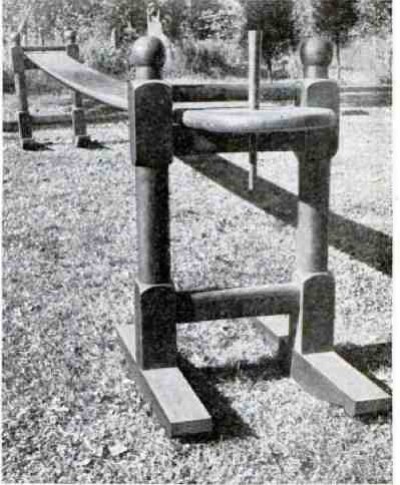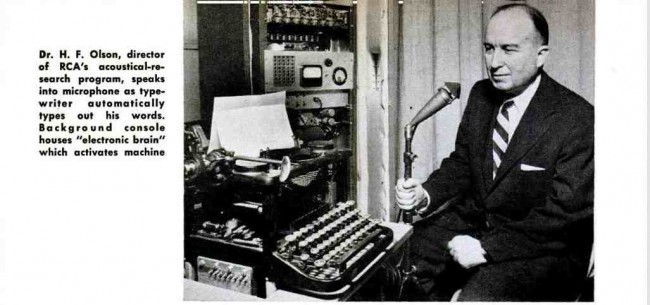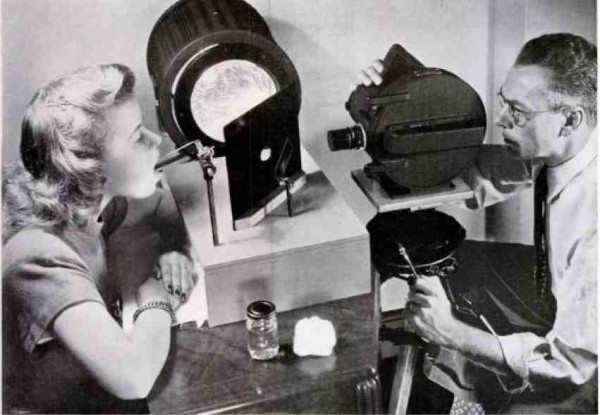Technology
Westinghouse Soundwaves
It's been 65 years! Where is my home version of an ultrasonic washing machine, dammit!
Posted By: Paul - Fri Oct 16, 2015 -
Comments (10)
Category: Domestic, Technology, 1950s
Mystery Gadget 32

The original article provides the answer.
But you might also like to visit this site, which shows the item in contemporary use.
Posted By: Paul - Wed Sep 30, 2015 -
Comments (10)
Category: Regionalism, Technology, Nineteenth Century
Unfit Bits
Tega Brain and Surya Mattu have come up with an "art project" (Unfit Bits) that gives people practical tips on how to cheat fitness trackers, such as the Fitbit. Why would you want to cheat a fitness tracker? Perhaps because your employer is offering a financial incentive to wear the tracker and is then monitoring your data and sharing that data with an insurance company. So screw them. Take their money and supply them with a stream of bogus data.The cheat methods are as easy as tying the tracker to a pendulum or to the branch of a tree, to make it think you're walking around when you're really slouching in front of the TV. Notes Mattu, "We’re putting this kind of trust into devices that are very simple. Unfit Bits shows how silly the data is from these kinds of sensors." More info at Observer.com.
Unfit Bits from Surya Mattu on Vimeo.
Posted By: Alex - Wed Sep 23, 2015 -
Comments (9)
Category: Art, Exercise and Fitness, Technology
1950s Voice Recognition Device

All that fancy circuitry ends up in typewriter output device.
Original article here.
Posted By: Paul - Tue Sep 01, 2015 -
Comments (6)
Category: Technology, 1950s
When the Circuit Breaks
Forty years onward, what's changed? Same arguments, same solutions. We are doomed!
Posted By: Paul - Sat Aug 08, 2015 -
Comments (2)
Category: PSA’s, Technology, 1970s
Nico Gerard Watch
The Nico Gerard Pinnacle Watch features a fully functional Apple Watch on the underside of the wrist band. It comes in a stainless steel version for $9300, or a gold version for $112,000.Their tagline is "Be Uncompromised." Because clearly, having only one watch on your wrist would be a compromise.

via OhGizmo
Posted By: Alex - Wed Aug 05, 2015 -
Comments (6)
Category: Excess, Overkill, Hyperbole and Too Much Is Not Enough, Fashion, Technology
Mystery Gadget 31

What is going on here?
The answer is here.
Posted By: Paul - Tue Aug 04, 2015 -
Comments (6)
Category: Technology, 1940s
A Whole Sheep in a Can

In 1948, the Continental Can Company ran a series of magazine ads presenting "uncanny" facts about the history of canning. One of these facts was the great technological achievement from 1852 of packing an entire sheep into a huge can.
The ad didn't bother to say who exactly did this, but after a bit of googling I figured out that it was the French inventor Raymond Chevallier-Appert (1801-1892). Before Chevallier-Appert, canned food kept spoiling. He figured out that it needed to be cooked at higher temperatures. Here's the rest of the story from the Stravaganza blog:
Posted By: Alex - Fri Jul 17, 2015 -
Comments (4)
Category: Animals, Food, Technology, Nineteenth Century
Way Out
Posted By: Paul - Wed Jul 15, 2015 -
Comments (3)
Category: Technology, Computers, Surrealism

| Who We Are |
|---|
| Alex Boese Alex is the creator and curator of the Museum of Hoaxes. He's also the author of various weird, non-fiction, science-themed books such as Elephants on Acid and Psychedelic Apes. Paul Di Filippo Paul has been paid to put weird ideas into fictional form for over thirty years, in his career as a noted science fiction writer. He has recently begun blogging on many curious topics with three fellow writers at The Inferior 4+1. Contact Us |




